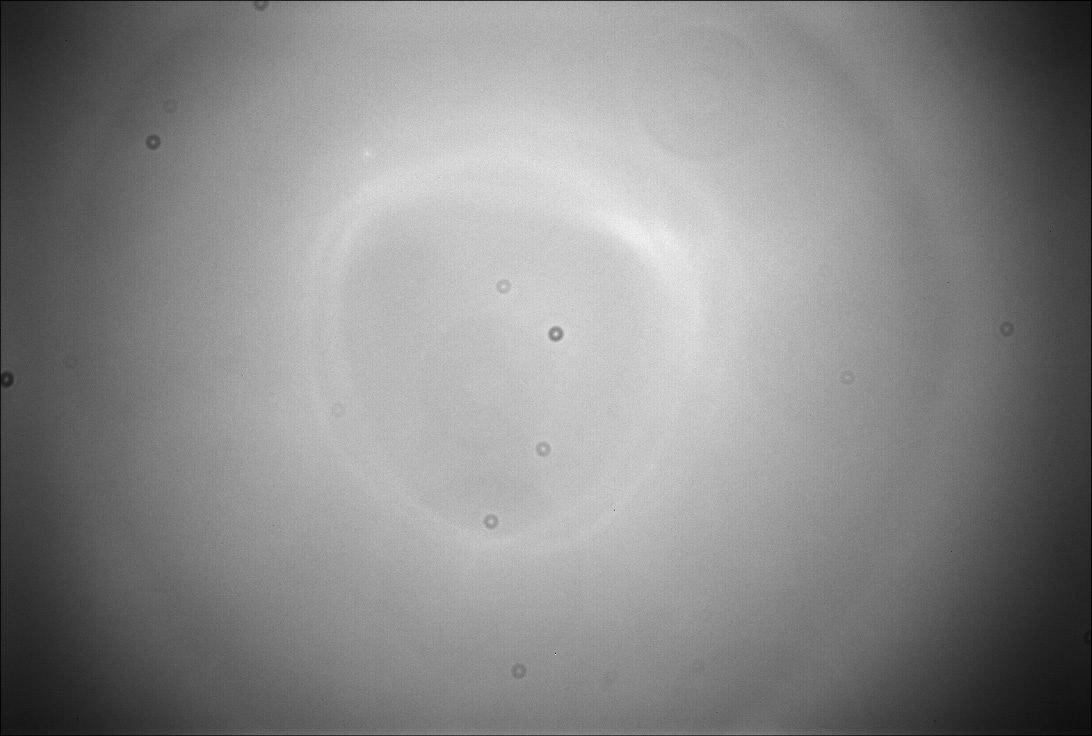A Flat Frame

A Flat Frame: This is an example of a flat frame. A flat frame is the image of what should be a perfectly even white field. This shows any variations in the optical system. The corners show less illumination, so they are darker. The small "donuts" are from diffraction around tiny specks of dust near the CCD sensor. The larger donuts are from dust on some other optical element farther away from the sensor. A flat frame is generated to correct the images of astronomical objects. After the "light" frame is corrected by subtracting a "dark" frame, it is modified by a 'flat" frame. essentially a zero time length exposure. It can be used to adjust dark frames when an exact time match with a light frame is unavailable. This is a "sigma" combine of 15 individual bias frames. A "sigma" combine is an average of all non-outlier pixels. If a single pixel in one of the images is very far from the average of the other images, typically because of a cosmic ray strike, that pixel is not included in the average.
Date: April 2010
Equipment:
Telescope: Meade 16" Schmidt Cassegrain with f6.3 reducer
Camera: SBIG ST-10XE
Exposure: 10x3s light
10x3s dark
Processing Notes: Capture with CCDSoft. Master flat created in CCDStack.
Scale: N/A
Additional Comments: It should be noted that the lightness variation is exaggerated from what you could detect with your naked eye. All cameras will show a similar effect, but for daytime shots this is not usually noticeable. The average person cannot differentiate variations less than ~1/4 f stop, which turns out to be ~20%. The variations here are ~15%. This small difference is important for astronomical images, since many of the things that are of interest only show these subtle variations.
Views: 8423
 This work is licensed under a Creative Commons Attribution-NonCommercial-ShareAlike 4.0 International License.
This work is licensed under a Creative Commons Attribution-NonCommercial-ShareAlike 4.0 International License.

